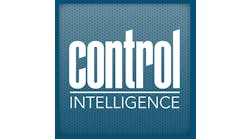Remote connectivity has provided the ability to do almost anything from a safe distance or sometimes even without the need for a human to participate at all. Equipment diagnostics have benefited greatly.
Whether it’s the advantage of receiving advice from someone halfway across the world who can provide diagnostic recommendations or it’s the ability to conduct predictive analytics in the cloud, machine connectivity has opened new doors to better operations.
We asked 17 industry experts for their takes on the impact that it’s had on equipment and manufacturing.
How does remote connectivity improve the effectiveness of sensing and diagnostics?
Remote connectivity in some cases allows us to use more than one technology on a specific data point and helps to ensure the quality of the data taken due to the point being physically located in the exact same position every time.
Paula Hollywood, senior analyst, ARC Advisory Group: Access to remote devices, machines and other assets is a leading value proposition of the Industrial Internet of Things (IIoT). For owner/operators, remote connectivity offers the potential for real-time, online visibility into plant operations by third-party experts from a centralized location to gain insight into operations. The potentials to reduce downtime and improve asset utilization as result of asset monitoring are too great to ignore. Remote monitoring of an asset by a supplier allows that asset to be monitored 24/7 by experts who notify the appropriate contact that action should be taken and what that should be well in advance of any failure or degradation of product quality. This allows the owner/operator to adopt a proactive maintenance strategy and reduce maintenance costs, as well as the cost of the asset over its lifecycle. The additional insight gained in performance enables managers to make better decisions. Any cost savings achieved by remote asset monitoring will have a positive impact on profitability.
For suppliers, alternatives to traditional hierarchies are spawning new business models based on connected assets. Instead of reacting to a customer call when something has gone wrong, suppliers can establish dynamic relationships with their customers by offering better maintenance service, ensuring optimal machine performance and, in some cases, guaranteeing machine output. Remote connectivity enables new services such as monitoring for excessive energy consumption, identifying usage patterns that potentially impact machine health and service life, detecting operating conditions outside of design range or recommending new settings or parameters to fine-tune individual machine performance.
Also read: Can I monitor and program using the same remote-access hardware or software?
Over time, industrial companies will shift their machine buying and asset performance management protocols to take advantage of the new capabilities made possible by digitized machines and enhanced service offerings. Instead of making capital expenditures to buy machines and then contracting to support them, in certain cases they may choose to enter into service-level agreements guaranteeing the outputs of machines, similar to the power-by-the-hour jet engine market model.
Now the engineer simply needs to connect to the remote machine using a cloud-based VPN service and within minutes can diagnose and often provide immediate correction, saving thousands in downtime expenses. Also, with extended secure data connectivity, data from sensors can be collected from many pieces of equipment and over time analytic tools can identify issues or patterns. This provides the organization with unprecedented information to leverage preventive and proactive service and keep the equipment in optimal operation. The combination of sensing with modern cost-effective Internet connectivity provides an new paradigm to serve any machine in the field and keep them running with optimal efficiency, which benefits both the machine builder and the customer alike.
Once the data is on Ethernet, there is no reason to not use protocols like OPC-UA to separate process data from diagnostic data. And once that has happened, the analysis of the diagnostics data can occur centrally using tools that are much better-suited than the PLC. In fact, such a central analysis system can even take inputs from other systems and correlate them. In the future, that may be done using big-data methods where diagnostics is self-learning.
Michael Howard, project engineer, Digital Manufacturing and Design Innovation Institute (DMDII), Chicago, Illinois: Remote connectivity allows an operator to manage multiple machines on a factory floor by not requiring them to be in front of a particular machine to support it. Visibility into the operation of a machine is increased, as the machine behavior can be monitored and simulated by feeding the data into various diagnostic tools. It also allows for the collection of machine data in a central place, where it can be analyzed and acted upon more quickly. This data can be monitored in real time, which can be used to stop a machine or modify a process before an error actually occurs. This can result in less machine downtime and less required on-site human intervention.
Jill Oertel, national product manager, Sick: Remote connectivity now makes it possible for OEMs and system owners to access data from machine sensors. Many of the recent generation of these sensors are equipped to operate on most of the common remote monitoring communication platforms, including IO-Link, EtherNet/IP, Profibus, Profinet, and EtherCAT.
By integrating the sensors with monitoring capability into a process control system, a user can instantly access the device, in a web-page format, for example, and perform setup, diagnostic, and process optimization tasks. Using this connectivity, a manufacturing system owner can gain a unique front-line look into machine efficiency, with data on not only what the sensor is doing, but also how well it's doing that task.
Remote teach functions or parameter setting allows owners to commission and adjust the device from a safe and convenient position without having to dismantle the machine and is a perfect example of remote connectivity improving productivity and troubleshooting. Sensors' parameters can be easily adjusted for product changeovers or process routing. Users can also fine-tune sensor functions in step with changes in environmental conditions such as ambient lighting, noise and dust particles in a saw mill or wood-product operations.
Some of these products are also equipped with large-capacity memory, so they can store a vast amount of operational data for later remote download and analysis. This feature can help users to pinpoint the source of anomalies, gauge specific functions over time to spot trends and evaluate corrective actions and assess the various factors influencing a machine's overall performance. For example, a meat or food processing plant could tap sensor data to assess how productivity might be affected by variables as diverse as product type and time of day.
Connected intelligent sensors can also give condition information of adjacent components, such as variations in fluid flow rates and process temperature, lubrication state, and other metrics that, if recognized too late, often lead to costly, unexpected system shutdowns. Similarly, users can communicate directly with certain encoder variants for status information such as temperature range; diagnostics such as error codes; and live data without the need to access or alter a PLC's programming. As a result, owners can plan, coordinate and implement corrective actions and preventive maintenance activities with the minimal effect on overall facility operations. Furthermore, encoders that have an integrated Web server can be accessed to perform firmware updates directly while they are on the machine, which saves cost and time since replacement of the encoder is not necessary.
Tim Senkbeil, product line manager, Industrial Connectivity Division, Belden: Remote, or on-machine, connectivity provides several advantages over home-run wiring. In addition to dramatically reducing install and machine setup time—as much as four times faster—distributed fieldbus I/O systems allow the engineer to isolate the source of a fault to a specific device and location within a machine. This allows the maintenance worker to quickly replace the offending device or cord set and get a machine back up and running in minutes.
Instead of walking catwalks and climbing service ladders, M&D professionals can log in and see data almost as if they were standing in front of the asset. With edge analytics, these systems can intelligently alert professionals when there is a yellow or red alert so they spend more time looking at information of interest and less time sorting through tons of data logged from machines that are operating normally.
Historically this would have involved mobilizing people and test apparatus from a distance, but, with remote connectivity and control, nearly the same effect can be achieved very quickly and using the instrumentation already installed and in place.
Mitesh Patel, head of Internet of Things for the manufacturing industry solution unit, TCS: Sensing devices are typically designed for specific purpose and deployed in large quantity and, therefore, resource-constrained to keep the costs low. Technologies like Internet of Things (IoT) provide connectivity, giving access to larger set of pooled resources like compute power over the network. It opens up avenues to correlate data from multiple sources in real time creating a superior level of aggregated intelligence.
Remote connectivity opens up the possibility to re-calibrate, tune devices deployed in the field improving the quality of service, maintain equipment reliability and enable remote diagnostics.
If those communication channels allow a remote analyst to access data on demand and perform additional diagnostic tests as required, then the ability to detect faults at an early stage and develop an appropriate action plan is greatly enhanced.
Adrian Messer, manager of U.S. operations, UE Systems: Advances in remote monitoring with ultrasound have led to the use of contact ultrasound sensors for continuous monitoring of machines and rotating equipment. Assets that were once inaccessible due to guarding or remote locations can now be monitored remotely or by traditional data collection methods with portable handheld ultrasound instruments.
Remote connectivity bypasses the delay and errors of manual data collection. Machine data becomes available for analysis, reporting and regulatory use and can be made available for use by on-site personnel, for example on a smartphone or other mobile device.
Additionally, Ethernet-based remote connectivity adds its own benefit. As data is exchanged over an Ethernet connection, the messaging includes status information on the Ethernet connection itself. Like information from sensors and devices, this data can be tracked and trended to identify communication problems.
Bob Drexel, product manager, process sensors, ifm efector: Sensors that communicate microcontroller to microcontroller, or M2M, will have a major impact on a machine's ability to deliver preprogrammed intelligence. Sensors and systems will identify and alarm on a wide variety of troubleshooting and maintenance warnings. The IIoT will connect systems for a detailed view of complete business operational condition. Less skill will be necessary in the worker, as more detailed data will be provided by the machines and their needs.
Image courtesy of smarnad at FreeDigitalPhotos.net






















